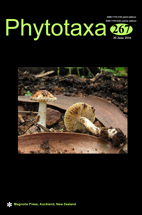Abstract
Lentithecium cangshanense sp. nov. (Lentitheciaceae, Dothideomycetes), was found on submerged decaying wood in a freshwater stream in Yunnan Province, China. The species is characterized by its black, semi-immersed to superficial, globose ascomata, cylindrical or obclavate, short pedicellate, bitunicate asci and bi-seriate, fusiform, 1-septate, yellowish to brown ascospores. Phylogenetic analyses of combined LSU, SSU and RPB2 sequence data show that L. cangshanense belongs in the family Lentitheciaceae, order Pleosporales and is a distinct species in the genus. The new species is introduced with an illustrated account and compared with morphologically and phylogenetically similar species.

